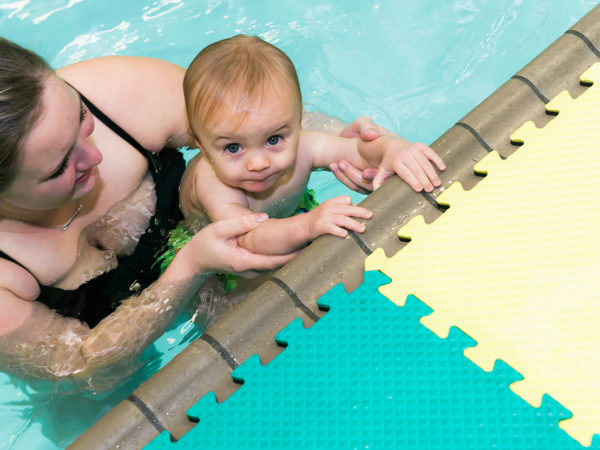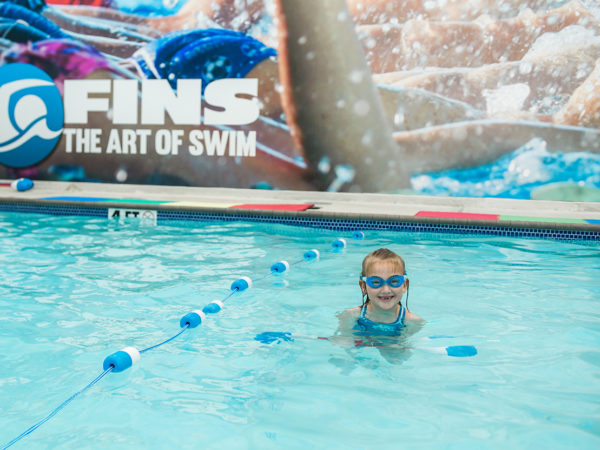By now, hopefully, you have had the chance to bring your child to The Advanced Swim and Safety level classes at least once and maybe even twice. We certainly hope they are having a great time and love coming back each week! We ALWAYS welcome feedback if there is anything you think would be helpful for us to know about your child, or even ways we can make the experience simpler or more pleasant for you as the parent!
Last week, we touched on the importance of continuing to teach water safety in our advanced swim and safety levels. This week, we want to dive deeper into FINS main focus: : water safety, and more specifically what that looks like in our Advanced Swim and Safety levels. You now know, as we do, that drowning is the leading cause of accidental death in children ages 1-4, and the second leading cause in children ages 5-14. FINS is on a mission to change those statistics and by committing your child in swim lessons, so are you! Each skill learned in the Advanced Swim and Safety program is designed to coincide with safety skills simultaneously. The safety will progress as the skills do, becoming second nature or instinct for your child in/around the water.
Below you will find safety skills listed by level:
White FINS:
Students enrolled in our White FINS program will focus on many safety skills including but not limited to: safety jumps from the side of the pool, getting from a vertical position to a back float, forward movement swimming with multiple rolls to float, and elementary backstroke!
- Safety Jumps (sometimes called Monkey Toes) – before exiting White FINS, students will be able to safely and independently jump from the side of the pool, return to the wall and climb out, all without goggles. This skill is an advanced form of the ‘fall and get to the wall’ (or ‘Humpty Dumpty’) that students learned in our Intro to Swim and Safety or Baby programs.
- Vertical Position to a Back Float – This is an important skill to master. In addition to being able to roll over from a prone swimming position, it’s important for students to learn how to get their bodies from a vertical position to a comfortable back float. This is another safety skill that can be a life-saving measure if they are unable to safely swim back to a wall, or if they need rest while getting to a wall.
- Multiple Roll to Float – As swim distance increases, we remind students that when they get tired or need air they can simply roll to their back and rest as long as needed while making their way safely to a wall. Along with rest, we teach them that this is an opportunity to call for help if needed.
- Elementary Backstroke – Now that your child has mastered the back float, our instructors will teach them the elementary backstroke, aka ‘tickle-airplane-soldier,’ to be able to move through the water on their back.
Blue FINS:
Students enrolled in our Blue FINS program will focus on safety skills, including but not limited to: safety jumps with a back float, increased distance for multiple rollovers and getting from a vertical position to a back float.
- Safety Jumps – Before exiting Blue FINS, students will be able to safely and independently jump from the side of the pool, roll to a back float, roll back and swim to the wall without goggles.
- Vertical Position to a Back Float – In addition to being able to roll over from a prone swimming position, students will continue to build strength to get their bodies from a vertical position to a comfortable back float. This is another safety skill that can be a life-saving measure if they are unable to safely swim back to a wall or if they need rest while getting to a wall.
- Multiple Roll to Float – As swim distance continues to increase, we remind students when they get tired or need air, they can simply roll to their back and rest while making their way safely to a wall. Along with rest, we teach them that this is an opportunity to call for help if needed.
- Kicks on back-now that they know how to move through the water on their back with elementary backstroke, we build on that by teaching them how to kick while on their back. In a self-rescue event, this will hopefully be another tool to help get them safely to the wall even quicker.
Bronze FINS:
Students in our Bronze FINS program will focus on safety skills, including but not limited to: a one-arm lead backstroke and strengthening roll to float with consecutive timed rollovers.
- One Arm Lead Backstroke – As students continue to learn the backstroke, we introduce the one arm lead so that their hand touches the wall first and not their head.
- Consecutive Timed Rollover – In preparation for learning side-breath, students can now use their roll to back float skills to take a quick breath between strokes and then roll back over and continue swimming.
Silver FINS:
Students enrolled in our Silver FINS classes will focus on safety skills involving the backstroke.
- Backstroke count – Like the one arm lead in Bronze FINS, the backstroke count is used to make sure a student safely approaches the wall. Students are taught to count the number of strokes it takes them from the flags to the wall. Once they know this number, they begin their count from the flags. Upon reaching their stroke count, they use a one-arm lead into the wall to prevent hitting their head.
Gold FINS:
Students enrolled in our Gold FINS classes will increase their endurance and learn how to tread water for safety.
- Treading Water – In addition to mastering swimming a full lap of the pool, students in the Gold FINS classes will learn to tread water for 30 seconds. This will allow them to keep their head above water in areas where they cannot touch the bottom. Treading water can be used to take a rest and get air or to call for help.
Be on the lookout for our email next week where we discuss swim progression in our Advanced Swim and Safety classes.




